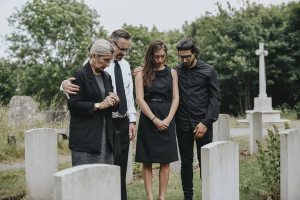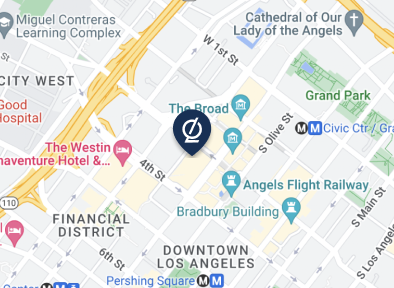
In the heartbreaking aftermath of losing a loved one, filing a wrongful death lawsuit may not be your first thought. However, it's an essential step towards justice and financial recovery for the surviving family members. The process involves understanding the legal provisions, demonstrating liability, and, importantly, proving the damages suffered due to the loss.
At Omofoma Law, we have experience with countless wrongful death cases, and we can also help you prove your wrongful death case. While it can be challenging to prove wrongful death, we can lean on our connections, expertise, and experience to put your wrongful death suit in a position to be successful.
Learn more about what we must do to prove damages in a California wrongful death claim, and contact us to schedule a free consultation.
In California, a wrongful death lawsuit is a civil action brought against a person or entity believed to have caused someone's death through negligent, reckless, or deliberate actions. Surviving family members or the decedent's estate initiate these lawsuits to recover damages for their emotional and financial losses.
A wrongful death claim is entirely separate from any criminal charges that may be brought against the defendant. It means that even if the accused party is acquitted in a criminal trial, a wrongful death civil suit can still result in a financial judgment against them.
These civil actions are governed by the California Code of Civil Procedure Section 377.60. They provide the legal foundation for recovering various damages, from financial support the deceased would have provided to the emotional pain suffered by the survivors.

California law allows several parties to file a wrongful death lawsuit. These primarily include the deceased's immediate family members, such as a surviving spouse, domestic partner, and children. If the deceased didn't leave behind a spouse or children, the decedent's parents or siblings can file a claim. Furthermore, anyone financially dependent on the decedent can file a wrongful death lawsuit.
These parties have legal standing because they're often the ones who suffer the most, both emotionally and financially, from their loved one's untimely passing. Their losses are unique and significant, extending beyond the pain of losing a family member to the potential financial hardships resulting from their death.
In a wrongful death lawsuit in California, the burden of proof lies with the plaintiff, who must establish four key elements:
The first step in proving a wrongful death claim is establishing that the defendant's negligent, reckless, or intentional actions led to the loved one's death. This negligence could range from a momentary lapse in judgment while driving, failure to maintain a safe environment or even a deliberate act of violence.
Next, the plaintiff must show that the defendant owed a duty of care to the deceased. This duty of care varies depending on the relationship between the parties and the circumstances. For example, a motorist must drive safely and follow traffic rules to avoid causing harm to others. If this duty is breached through negligent driving, resulting in death, it could form the basis for a wrongful death claim.
The third element demonstrates a direct link between the defendant's breach of duty and the death of the loved one. This causation must be clear, showing that, but for the defendant's actions, the decedent would not have died. This often requires expert testimony to establish.
Finally, the plaintiff must demonstrate that they incurred measurable damages due to their loved one's death. These damages can be economic, such as medical bills, funeral costs, and loss of income, or non-economic, like pain and suffering and loss of companionship.

One of the most significant aspects of a wrongful death lawsuit is the calculation and proof of damages. This involves a multifaceted approach:
Before starting the process, retaining an experienced wrongful death attorney is imperative. These professionals have the knowledge and resources to navigate the intricate legal landscape of wrongful death claims. They can help gather crucial evidence, liaise with insurance companies, calculate damages, and represent your interests in court.
Your attorney will undertake a thorough investigation to gather evidence proving the defendant's negligence. This can include eyewitness accounts, police reports, photographs from the scene, video surveillance, and expert testimonies.
Identifying all potentially responsible parties is a critical step. This process may implicate multiple individuals or entities with different insurance policies or resources that could impact the claim.
Economic damages provide a quantifiable measure of the financial burdens that descend upon a family following the death of a loved one. The valuation of these damages can be multifaceted and generally encapsulates the following aspects:
A. Medical Expenses and Bills: These include all medical-related costs incurred due to the care provided to the deceased before their demise. This encompasses not only the immediate expenses of treatments such as ambulance charges, hospitalization costs, surgical procedures, and medication costs but also the cost of any long-term care, rehabilitative services, or home care services that may have been needed.
Calculating these costs often necessitates the collection of all relevant medical bills, insurance statements, and receipts associated with medical care.
B. Funeral and Burial Costs: The expenses associated with the final rites of a person can be significant. Funeral and burial costs can include charges for the burial plot or cremation, costs associated with the casket or urn, embalming or cremation fees, costs related to the headstone or memorial marker, funeral director's fees, as well as the costs of the funeral ceremony itself such as venue booking, transportation, and catering services.
Given the cultural significance and personal preferences involved in funerals, these costs can vary widely and need meticulous documentation.
C. Loss of Financial Support and Potential Inheritance: The financial impact of losing a loved one often extends beyond immediate expenses. The deceased may have contributed significantly to the family's income, and the loss of this support can be devastating.
It's important to calculate the future earnings the deceased could have provided had they lived their expected lifespan. This calculation considers several factors, including the deceased's age, health, life expectancy, occupation, skills, and earning potential. It often requires the assistance of financial experts to project future earnings and potential inheritance accurately.
D. Loss of Benefits or Pension: When the deceased was employed or retired, they may have provided the family with additional benefits such as health insurance, life insurance, or a pension. The loss of these benefits can translate to substantial financial challenges for the family.
Quantifying this loss may involve understanding the value of these benefits, estimating their future worth, and considering the cost of replacing such benefits.
While economic damages provide a measure of tangible financial losses, non-economic damages offer compensation for the intangible losses or the emotional distress endured by the surviving family members. These can be challenging to quantify due to their subjective nature but are integral to the full representation of the loss suffered:
A. Loss of Companionship and Emotional Distress: The emotional turmoil following losing a loved one is immeasurable. Survivors often grapple with feelings of loneliness, anxiety, and emotional instability. These feelings can adversely affect their ability to function in daily life, impacting their relationships, work, and overall well-being.
Courts recognize this emotional distress and often provide compensation for the loss of love, companionship, comfort, and affection that the deceased provided.
B. Pain and Suffering Experienced by Surviving Family Members: The psychological suffering of the surviving family members can manifest in several ways. They may experience grief, depression, insomnia, or post-traumatic stress disorder (PTSD). These mental health impacts are considered in a wrongful death claim, recognizing the profound emotional impact of the loss.
C. Loss of Consortium: This applies specifically to the surviving spouse or domestic partner. It acknowledges the deeply personal relationship between partners and the irreplaceable loss suffered by the surviving partner.
This includes assessing and demonstrating the personal, professional, and financial contributions the deceased made to their family and society:
A. Demonstrating the Deceased's Contributions to the Family: This extends beyond financial support to consider their role in raising children, maintaining the household, and providing emotional support and stability. The deceased may have played a crucial role in caring for children or elderly family members, performing household chores, or making important family decisions. The loss of these contributions can profoundly impact the family's daily life and stability.
B. Income, Support, Guidance, and Companionship: This element seeks to quantify the value of the deceased's financial support, guidance, and companionship. It may involve examining the deceased's past income, their prospects for future income growth, the non-financial support and guidance they provided to their family, and the companionship they offered.
C. Documentation of Income, Tax Records, and Employment History: A careful review of the deceased's income history, tax records, and employment trajectory can substantiate the economic loss suffered by the family. This documentation can help paint a picture of the financial support the deceased would likely have provided.
D. Testimonials From Friends, Family, or Colleagues: These personal anecdotes and reflections can help demonstrate the deceased's value in their personal and professional life.
Financial experts can help project potential future losses, considering factors like the deceased's future earning potential, possible promotions, inflation, and changes in the market.
In California, the statute of limitations for filing a wrongful death lawsuit is two years from the date of the loved one's death. This time limit underscores the importance of promptly seeking legal advice after a loved one's death. Failure to file a lawsuit within this period may result in losing the right to legal recourse.
At Omofoma Law, we know that money and damages cannot replace the loss of a beloved family member, but we are here to pursue justice on your behalf. For example, a successful wrongful death claim can provide the resources needed to cover bills, maintain your household, and allow you to grieve without financial worry.
Our experienced wrongful death attorney can handle all aspects of your claim, from investigating the circumstances surrounding the death to aggressively advocating for your rights in court. We are dedicated to securing justice for your loved one and the maximum compensation for your loss.

Our commitment is to stand by you during these challenging times, providing compassionate counsel and solid legal representation. Contact Omofoma Law today for a free consultation with our experienced California wrongful death lawyer, and let us discuss your wrongful death action.
We are here to help you navigate this difficult journey and ensure that you and your family are justly compensated.


Request Your
Free Consultation
"*" indicates required fields